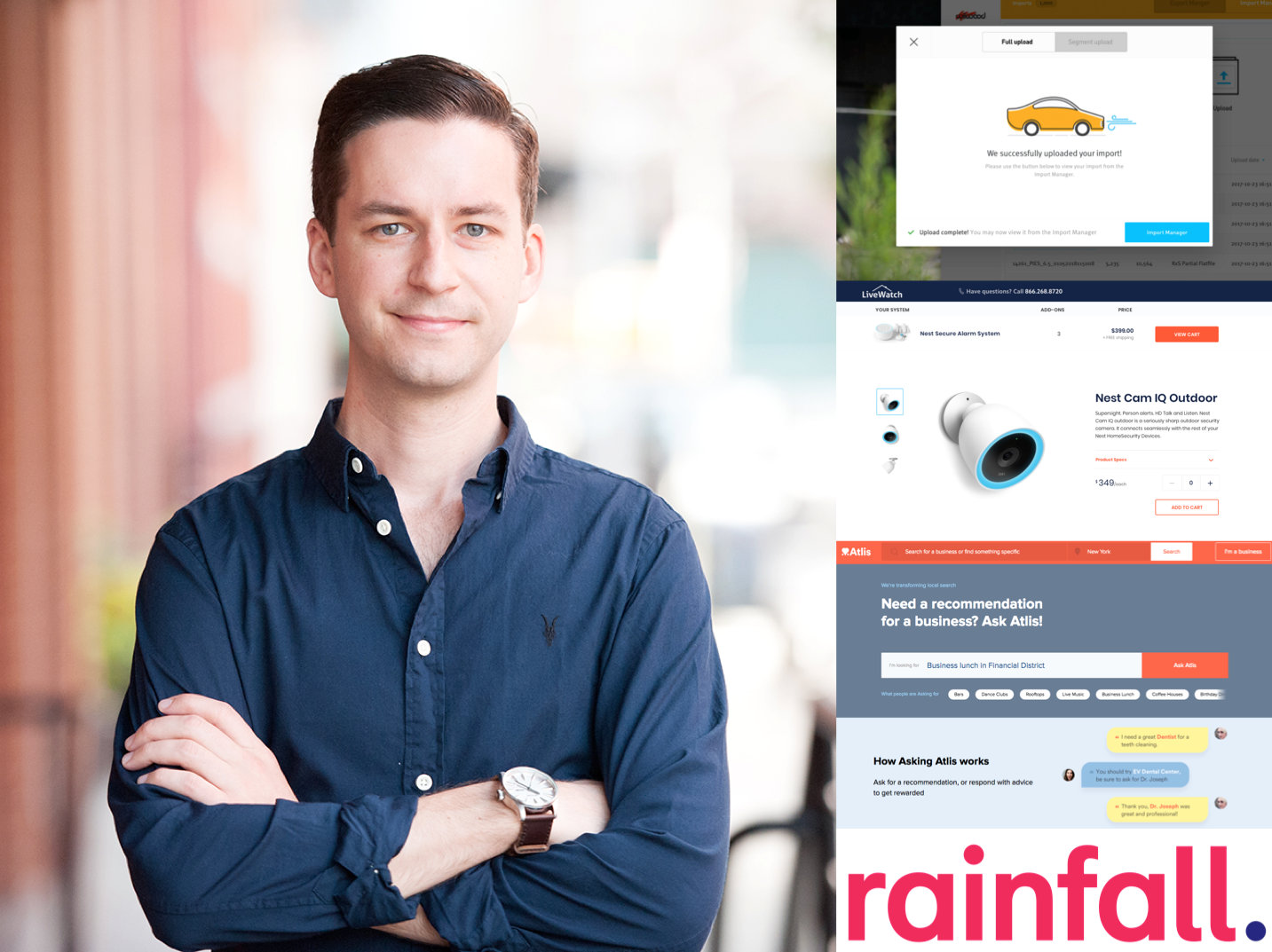How does a business stand out among the crowd in the digital age? A great, easy-to-use website, strong brand messaging, and good design, are all key to success in showing the world who you are and what you believe.
We were lucky enough to sit down with an expert on all things design and branding – Marc Anderson, founder and CEO of Rainfall, a design studio based between New York City and Seattle who offers their clients a full range of services from website design, brand creation, re-branding, interactive experiences, and more.
Read on to find out more about Marc, his background, thoughts on web and social media trends, and much more!
What is Rainfall and how did you begin?
Marc Anderson (MA): Rainfall is a design studio that specializes in brand identity, interactive experiences, and digital products. I often tell people that we specialize in “brand experiences,” this includes everything from identity design through to digital products (think mobile apps and online platforms) and websites. Today, “branding” has taken on a whole new meaning, as an identity is so much more than a logo and a set of colors. For many technology companies, their user base will never see their logo in the traditional sense as a sign or a business card, instead they’ll interact with it as an app icon or a Twitter avatar, or a button, or a mobile application and the way it moves when they interact with it. We consider everything we make “user experience design” because brand elements always exist as part of a larger ecosystem, whether that ecosystem is one that we designed or are reacting to in nature. Rainfall is full service, so if clients come to us with a creative problem to solve we will help connect all of the necessary dots from design to writing, to photography, to illustration, to motion, to code.
I grew Rainfall from after-hours work that I was creating while still working at a company called Fantasy Interactive. Over time, these side projects grew to the point where I felt comfortable focusing entirely on them rather than working to split my time between what were effectively two full-time jobs. I was most excited about the reality that most of my after-hours clients were startups, and building a relationship with them early in their existence meant that I could make a greater impact on their brand’s future. This focus led to me becoming what is effectively the creative director of Rainfall while I work with and employ other talented individuals who help produce the work that we need to satisfy our clients’ needs.
Were there accounts/companies that you worked with that made you want to branch off?
MA: Our founding clients were Atlis, Fr8Hub, and RXSpeed (Now PartsHub, no relation to Fr8Hub). While the work we did for each client varied, each involved the design of fairly complex user experiences that needed to be made simple, friendly, and fast. In my previous experience these types of projects would take months and cost a great deal, but as a smaller shop with a close client/studio relationship we could integrate ourselves with our clients’ in-house teams and accomplish tasks much more quickly. This speed to market and the ability to see work come to life so quickly was a real motivator to push Rainfall further.
What do you see as being upcoming trends in web design over the next 10 years?
MA: I think that the web is going to become both increasingly portable as well as immersive in the coming years. The need for desktop computers is decreasing, especially in the home, as tablets, phones, and smaller laptops have the power to accomplish the majority of consumer tasks. I do believe that VR will explode as entry costs decrease, with individuals entering for access to content and deciding that they can easily keep all of their digital engagement in a single ecosystem.
With social media ever evolving, what are some of your clients requests as it relates to Instagram?
MA: When we create brand assets for our clients we are always thinking about how they will ultimately be used on Instagram. This allows us to naturally extend the brand’s visual language and marketing messaging to that platform without having to scramble to create specific assets on the eve of a product launch. We also have a number of conversations about how to present the “buttoned up” version of the brand through posts vs. the “behind the curtain” content that is better suited to stories. We have found that a clear divide works quite well, and viewers are more accepting of multiple daily stories than they are of frequent posts.
What do you see happening with social media over the next 10 years?
MA: Social media has become all about access, and this is only going to continue. Twitter allows access to quick conversations with friends and celebrities, Instagram to they are up to both right now and in daily life, and Facebook is a more holistic view of all of those. As time goes on, people and brands will continue to allow their friends and the public further and further into their actions, thoughts, and experiences. For brands, this means that any misdeeds will be immediately apparent to the public, and finding true advocates will require them to operate in the best interests of their customers. Advertising will continue as ever, especially with the expansion of technology to new platforms such as VR, but the value of those ads will be highly dependent on the actions of the companies creating them.
With attention spans being shorter than ever, how do you use design to capture people’s attention?
MA: The short answer is that it depends on each client, what it is that they offer, and how we simplify their message into a single image and/or headline. The longer answer is that viewers are constantly evolving to be savvy of marketing messaging and tune it out. We get around this issue using two methods. The first is to constantly iterate on and test our marketing materials. At the outset of a campaign we come up with numerous options, test all of them, then refine and iterate on those that do well. That’s purely a tactic, and hopefully all agencies are doing that. When it comes to messaging we find that authenticity is the most effective way to win true advocates for a brand, which are worth more over time than a quick burst of one-time fans. For that reason we always work to determine what makes our partners truly unique from their competitors and lean on that, rather than trying to develop messaging that could be perceived as hollow or as “click-bait” as it’s recently become known.
How do you break down information into digestible “bites”?
MA: We do this by looking at the overall narrative and dividing it into pieces that are comprehensive if digested alone, outside the context of the whole. For brands, this is often starting with dividing the message into “What, Why, When, How, and Where.” If we can easily accomplish this then we can craft each of those messages in a succinct manner that will effectively communicate to our audience.
What are some sites that (personally) capture your attention? And what do you like about them?
MA: From a product marketing perspective Bang and Olufsen does a great job creating a narrative for their new products with imagery and text in a way that is compelling, simple, and effective.
The New Yorker and Bloomberg have created excellent platforms for narrative that allow their readers to focus on the story and really dive deep into their narratives.
For more on Marc Anderson and the exciting things that Rainfall is doing, visit: Rainfall.co and follow along on social at @Rainfalldotco.


